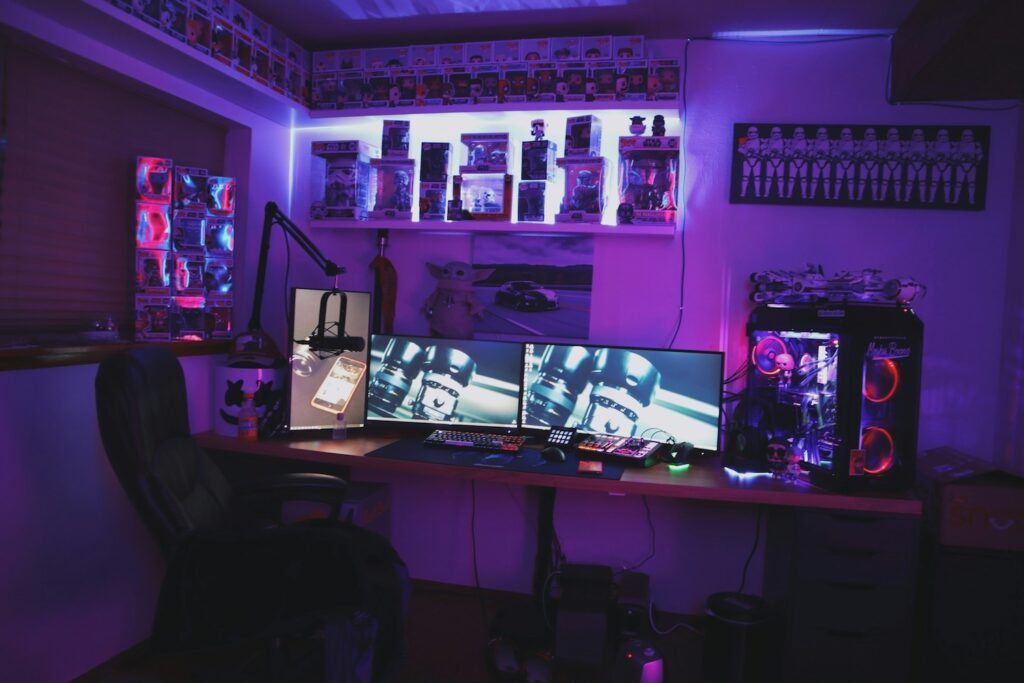
Undoubtedly, live streaming is taking over the digital space. Business owners are looking for effective ways to connect with their audience in real-time, build strong relationships, and share experiences through authentic content. One of the most prominent challenges they face is a diligent way to engage the targeted market.
Live streaming has seen explosive growth in recent years. This article will show how you can harness the power of live video streaming for events and product launches. It also offers an exclusive peek behind the scenes. It covers the benefits of practice and provides insight into how live streaming is redefining the future of gatherings.
What is Live Streaming?
Live streaming is a technology that allows users to broadcast real-time video and audio content over the internet. It enables individuals or organizations to share live events, presentations, performances, or any other type of content with an audience that can watch the stream as it happens, often from anywhere in the world with an internet connection.
According to Maximize Market Research, the global live-streaming market was valued at US$ 47.43 billion in 2022 and is expected to grow at 27% between 2023 and 2029. The market is projected to increase and reach around US$ 252.76 billion by 2029. An internet-enabled device enables users to stream content like events, TV shows, and more.
Live streaming typically involves capturing video and audio using a camera and microphone, encoding the content into a digital format, and then transmitting it over the internet to a streaming platform or service. Viewers can access the live stream through various devices such as computers, smartphones, tablets, or smart TVs, using compatible software or apps.
One of the key features of live streaming is its immediacy and interactivity. Unlike pre-recorded videos, live streams allow for real-time engagement between the broadcaster and the audience. Viewers can interact with the content creator through live chat, comments, polls, and other interactive features, creating a sense of connection and community.
Live streaming has become increasingly popular across various domains, including entertainment, gaming, education, business, news, and social media. It offers a versatile and powerful tool for sharing experiences, disseminating information, building relationships, and reaching audiences on a global scale.
Benefits of Live Streaming
Live streaming offers a plethora of benefits across various domains, making it a powerful tool for individuals, businesses, and organizations alike. Here are some of the key benefits of live streaming:
Real-time Engagement
Live streaming enables real-time interaction between content creators and their audiences. According to recent studies, 80% of audiences prefer watching live video content from a brand rather than reading a blog, and 82% of people would rather watch a live video from a brand than read a social media post. This preference for live video highlights the importance of real-time engagement in capturing the audience’s attention and fostering a sense of connection.
Live streaming enables viewers to participate in live chat, ask questions, provide feedback, and engage with the content dynamically and interactively. This fosters a sense of connection and community, enhancing the overall viewer experience.
Broad Reach
Live streaming transcends geographical boundaries, allowing content to reach a global audience. With the widespread availability of internet access and compatible devices, people from different locations can tune in to live streams, expanding the reach and impact of the content. Almost 67% of live video viewers are more likely to buy a ticket to a concert or event after watching a live video of that event or a similar one.
Cost-effectiveness
Compared to traditional forms of media production and distribution, live streaming can be a more cost-effective solution. It eliminates the need for expensive equipment and production facilities, as well as the costs associated with physical distribution. With the right setup, content creators can produce high-quality live streams using affordable equipment and streaming platforms.
Immediate Feedback
Live streaming provides instant feedback and metrics that can help content creators gauge audience engagement and response in real time. By monitoring viewer metrics such as viewer count, comments, and reactions, creators can adjust their content and presentation on the fly to better cater to their audience’s preferences and interests.
Authenticity and Transparency
Live streaming offers a platform for authentic and transparent communication. Since live streams are unscripted and unedited, they provide a raw and genuine glimpse into the content creator’s world. This authenticity can foster trust and credibility among viewers, especially in industries where transparency is valued, such as journalism, education, and influencer marketing.
Versatility
Live streaming is a versatile tool that can be used for a wide range of purposes. From entertainment and gaming to education, business, news, and social activism, live streaming can accommodate diverse content formats and objectives. Whether it’s hosting live events, conducting webinars, showcasing products, or broadcasting breaking news, live streaming offers endless possibilities for creative expression and communication.
Monetization Opportunities
Live streaming opens up various monetization opportunities for content creators. Platforms often offer features such as subscription services, pay-per-view events, virtual gifts, and advertising revenue sharing, allowing creators to monetize their content directly or indirectly.
According to research, 70% of marketers say that live video converts better than any other type of content. Most businesses can leverage live streaming to promote products and services, generate leads, and drive sales.
Archival Value
While live streaming is inherently ephemeral, many platforms offer the option to archive live streams for later viewing. This archival feature extends the lifespan of live content, allowing viewers to access and revisit streams after they’ve ended. Archived live streams can serve as high-quality evergreen content, continuing to attract viewers and generate engagement over time.
How Live Streaming is Redefining the Future of Gatherings?
In the age of digital connectivity, the way we gather and interact has undergone a remarkable transformation. Live streaming, once a novelty, has now become an integral part of how we experience events, from conferences and concerts to weddings and religious ceremonies. As we navigate a world increasingly shaped by technology, it’s worth exploring how live streaming is not just changing the present but redefining the very future of gatherings.
Bridging Physical and Digital Realms
Live streaming has shattered the barriers of physical distance, allowing people from across the globe to participate in events they otherwise couldn’t attend. According to a report by Livestream, 80% of audiences would rather watch live video from a brand than read a blog, and 82% prefer live video to social posts.
Whether it’s a business conference, a music festival, or a family reunion, live streaming brings the experience directly to viewers’ screens, transcending geographical limitations. This bridging of physical and digital realms creates a more inclusive environment, enabling broader participation and fostering global connections.
Amplifying Reach and Impact
Gone are the days when the success of an event was measured solely by the number of attendees in the venue. Live streaming exponentially expands the reach of gatherings, amplifying their impact beyond the confines of a physical space. A well-executed live stream hosted through an open-source event ticketing system can attract audiences numbering in the thousands or even millions, vastly extending the event’s influence and relevance.
According to TechJury, live video is expected to account for 13% of all internet traffic by 2022 and 17% by 2023. Whether it’s raising awareness for a cause, promoting a brand, or sharing knowledge, live streaming offers unparalleled potential for engagement and outreach.
Fostering Virtual Communities
In an era marked by social distancing and remote work, live streaming serves as a lifeline for building and sustaining virtual communities.
From online gaming communities to fitness classes and support groups, live-streaming platforms provide a virtual space where like-minded individuals can come together, interact, and forge meaningful connections. These virtual communities offer a sense of belonging and camaraderie, transcending physical boundaries and enriching the social fabric of our digital world.
Enhancing Accessibility and Inclusivity
Live streaming has emerged as a powerful tool for promoting accessibility and inclusivity in gatherings of all kinds. By offering real-time captioning, sign language interpretation, and other accessibility features, live streams ensure that individuals with disabilities can fully participate in events.
Moreover, live streaming makes gatherings more accessible to those facing mobility constraints, financial limitations, or other barriers to attendance. According to Statista, the global live-streaming market is projected to reach US$184.3 million by 2028. By prioritizing accessibility, live streaming enables a more diverse and inclusive range of voices to be heard and valued.
Revolutionizing Event Dynamics
The advent of live streaming has revolutionized the dynamics of event planning and execution.
Organizers now have to consider not only the logistics of hosting a physical gathering but also the technical requirements for live streaming to a global audience. This shift towards hybrid events—combining in-person experiences with virtual components—has spurred innovation in event technology and reshaped traditional event formats.
From interactive polls and Q&A sessions to virtual networking opportunities, live streaming opens up a myriad of possibilities for engaging attendees and creating memorable experiences.
Conclusion
In an increasingly interconnected world, live streaming is not just a trend but a transformative force shaping the future of gatherings. By breaking down barriers, amplifying reach, fostering communities, promoting accessibility, and revolutionizing event dynamics, live streaming is redefining how we come together, share experiences, and build connections.
As we embrace the limitless potential of live-streaming technology, the future of gatherings holds the promise of greater inclusivity, engagement, and innovation. Whether you’re tuning in from across the globe or joining in person, the power of live streaming is poised to enrich our lives in ways we’ve only begun to imagine.
Featured image by Kadyn Pierce on Unsplash
The post How Live Streaming is Redefining the Future of Gatherings appeared first on noupe.
